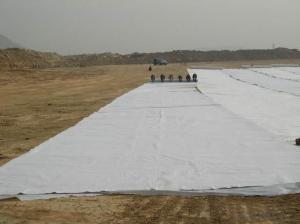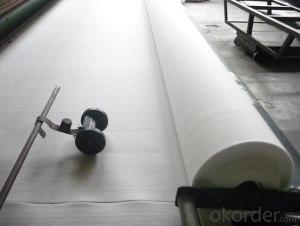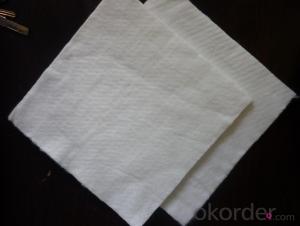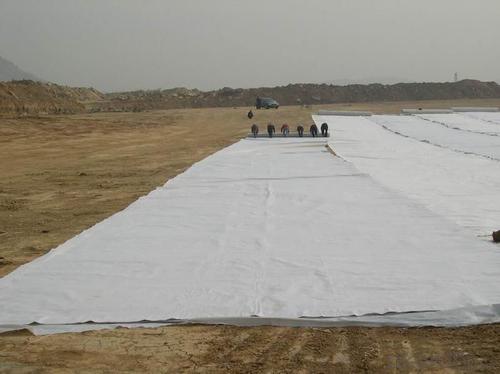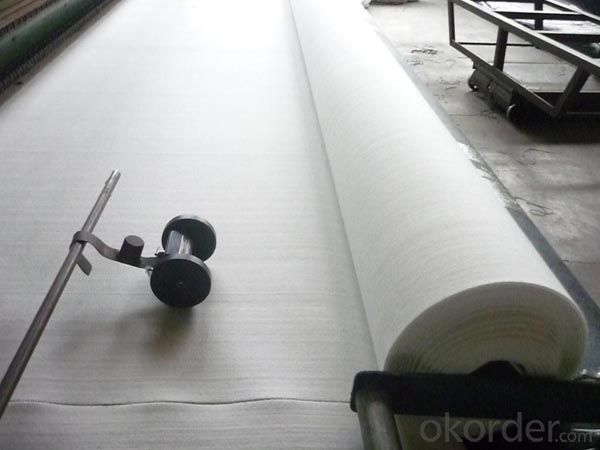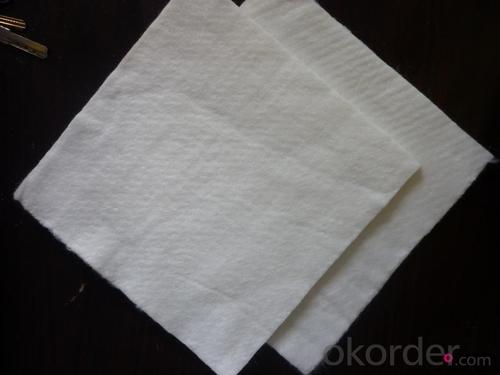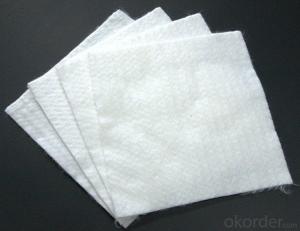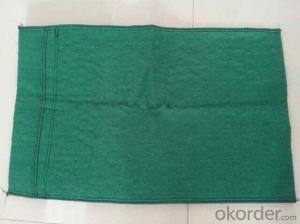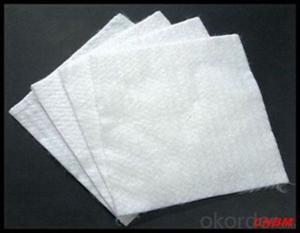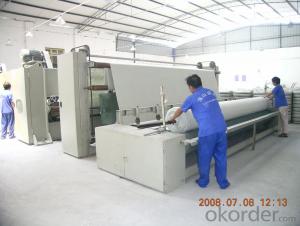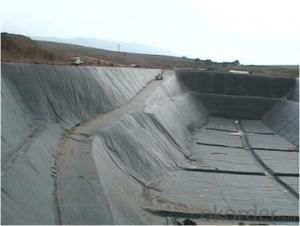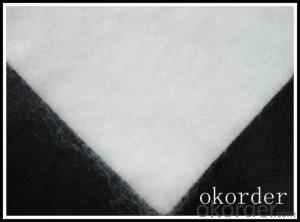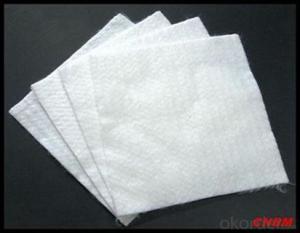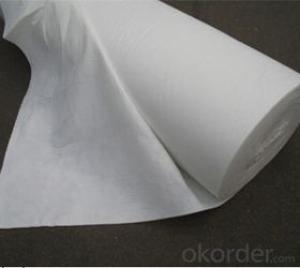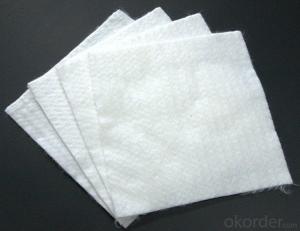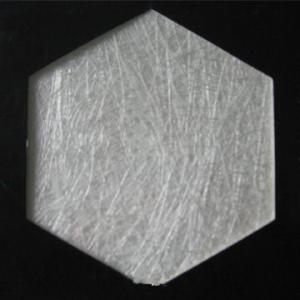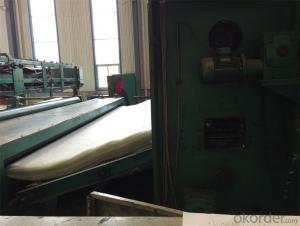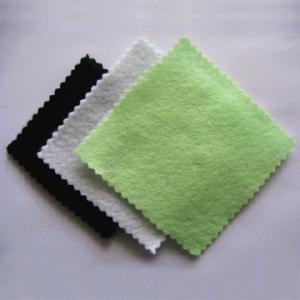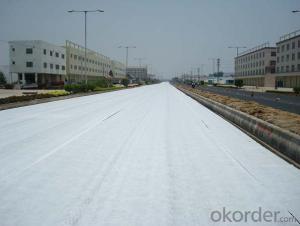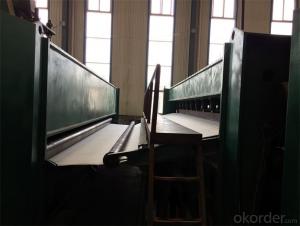Tela Geotextil Para Que Sirve - Poliester Nonwoven Geotextile Fabric for Construction
- Loading Port:
- Qingdao
- Payment Terms:
- TT OR LC
- Min Order Qty:
- 50000 m²
- Supply Capability:
- 5000000 m²/month
OKorder Service Pledge
OKorder Financial Service
You Might Also Like
Product Description:
1,Specification of Polyester Nonwoven Geotextile Fabric for Construction
1)Area Weight: 100g/m2-1500g/m2
2) Width: Within 6 m (1m-6m)
3) Length: 50m-100m/roll (as per request)
4) Material: Polypropylene or polyester
2,Specialities of Polyester Nonwoven Geotextile Fabric for Construction:
1) Staple fibers needle punched nonwoven geotextile
The geotextile is made of polypropylene staple fibers on cross-laying equipment and needle punched equipment. It owns the advantages of acid and alkali resistance, erosion resistance, aging resistance, large strength, stable size, good filtrability etc.
2) Filament nonwoven geotextile
Filament geotextile has features as follows: High strength, good capacity of elongation and high biology tolerance, alkali tolerance, acidity tolerance, weather resistance good filtration and fine drainage capacity etc. Also it is of low cost, easy in construction and use effects.
3,Package of Polyester Nonwoven Geotextile Fabric for Construction:
Each roll is wrapped with plastic film.
4,Application of Polyester Nonwoven Geotextile Fabric for Construction:
1) Filtration :
The filtration layer of the dykes, river canal, seacoast, concrete slope, retaining walls. At the same time of preventing the clay granule from passing, it allows the water and the gas pass through freely.
2) Separation :
The isolation of the railway dregs and the roadbed, roadbed and the soft base, surface of the airdrome and parking lot and the groundsill, different dam materials. It isolates the soil and the gravel of two kinds different granule pathway from the groundsill or other buildings.
3) Protection :
It prevents the bank from being washed out, protects the bank and the bottom, prevents the water and soil from being washed away.
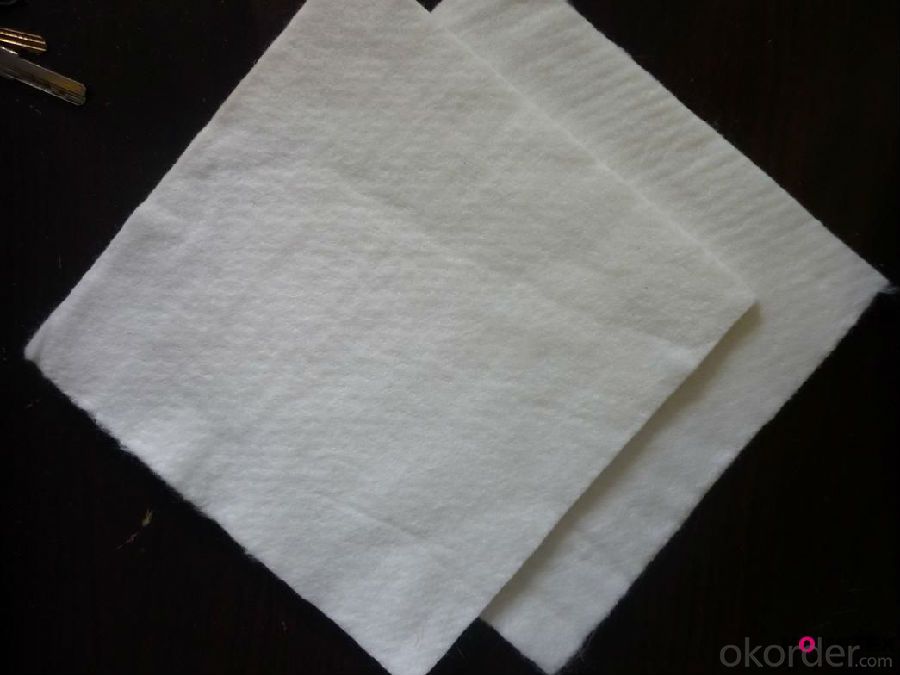
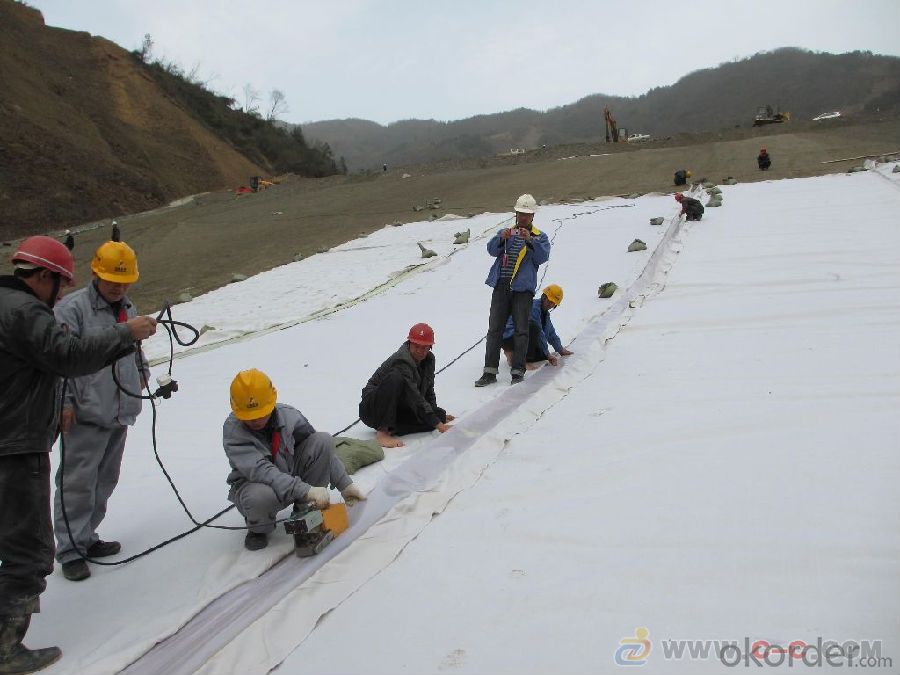
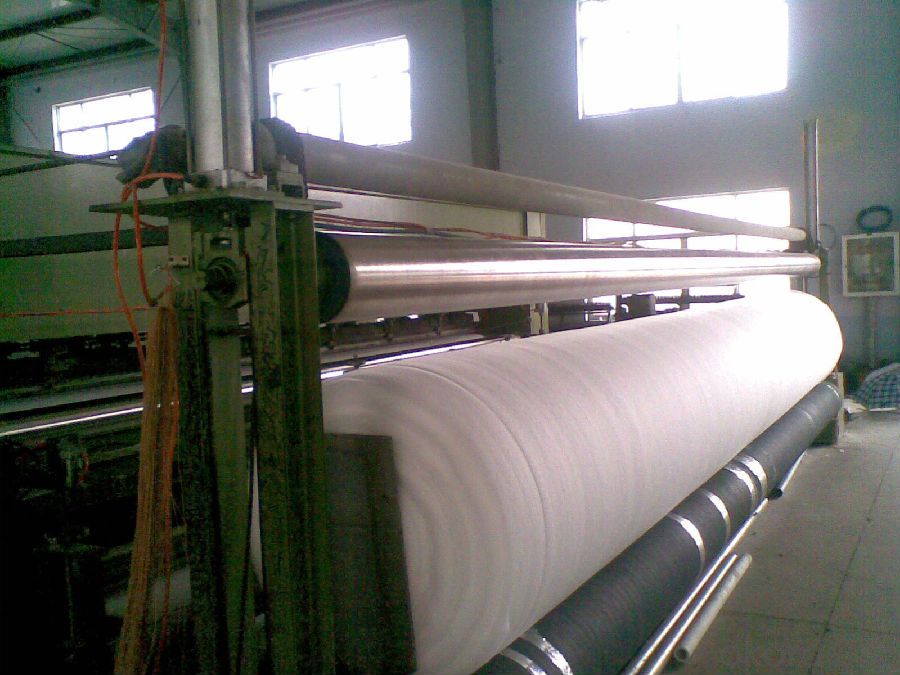
6.FAQ
We have organized several common questions for our clients,may help you sincerely:
1>How about your company?
A manufacturer & supplier focuses on the production of construction materials, including but not limited to PP staple fiber, geotextile geo-grid, geo-bag etc. Customized product is also available based on your detailed requirements.
2>How long can we receive the product after purchase?
It takes about 1 to 4 weeks to finish the production based on the specific production schedual. Then it will depend on the shipping time from loading port to the destination port.
- Q: What is the purpose of using geotextiles?
- The purpose of using geotextiles is to provide various functions such as separation, filtration, reinforcement, and drainage in civil engineering and construction projects. They are used to prevent the mixing of different soil layers, improve soil stability, control erosion, and enhance the overall performance and longevity of infrastructure projects.
- Q: How do geotextiles improve the performance of slopes?
- Geotextiles improve the performance of slopes by providing reinforcement and stability. They help to prevent soil erosion by acting as a barrier against water flow and sediment movement. Additionally, geotextiles assist in distributing the load evenly across the slope, reducing the risk of structural failure.
- Q: How do geotextiles help in preventing soil erosion on slopes?
- Geotextiles help in preventing soil erosion on slopes by acting as a protective barrier. They are engineered fabrics that are placed on the slope surface to stabilize the soil and control water flow. Geotextiles allow water to percolate through while retaining the soil particles, thus reducing the impact of rainfall on the slope and preventing erosion. Additionally, they help in reinforcing the soil structure, providing stability to the slope and preventing the loss of soil due to gravitational forces or surface runoff.
- Q: Can geotextiles be used in the protection of bridge abutments?
- Yes, geotextiles can be used in the protection of bridge abutments. Geotextiles are commonly employed to provide erosion control, soil stabilization, and filtration in various civil engineering applications. By placing geotextiles along the abutments, they can help prevent soil erosion, reinforce the embankment, and provide a stable foundation for the bridge structure, thereby enhancing the overall protection of bridge abutments.
- Q: Geotextile manufacturers are what industry
- Geotextile manufacturing enterprises are textile and leather industry
- Q: How do geotextiles affect soil nutrient availability?
- Geotextiles can have both positive and negative effects on soil nutrient availability. On one hand, geotextiles can help retain nutrients in the soil by preventing their leaching and runoff, thus promoting their availability for plant uptake. On the other hand, if geotextiles are impermeable to water and air, they can hinder nutrient exchange processes and microbial activity, ultimately reducing nutrient availability in the soil. Therefore, the impact of geotextiles on soil nutrient availability depends on their design and application.
- Q: Geotextile seepage seams how to deal with
- First geotextile is not waterproof, you say is a composite geomembrane, seams with a welding machine welding, can also use ks hot melt welding. Huazhi engineering materials manufacturers to answer your questions
- Q: What is the representative batch of geotextile?
- Geotextile batch is 2000 square meters.
- Q: How do geotextiles help in reducing the settlement of structures on soft soils?
- Geotextiles help in reducing the settlement of structures on soft soils by providing a stable base and improving soil characteristics. They distribute the load more evenly across the soil, increase its shear strength, and prevent excessive settlement by acting as a reinforcement layer. Additionally, geotextiles can also allow for better drainage, which helps in dissipating excess pore water pressure and reducing the risk of settlement.
- Q: What are the different weight options available for geotextiles?
- Geotextiles typically come in a range of weight options, which can vary from lightweight to heavyweight. These weight options are measured in terms of grams per square meter (gsm) or ounces per square yard (oz/yd²). The specific weight option chosen for a geotextile depends on the project requirements, such as the soil conditions, desired strength, and intended application.
Send your message to us
Tela Geotextil Para Que Sirve - Poliester Nonwoven Geotextile Fabric for Construction
- Loading Port:
- Qingdao
- Payment Terms:
- TT OR LC
- Min Order Qty:
- 50000 m²
- Supply Capability:
- 5000000 m²/month
OKorder Service Pledge
OKorder Financial Service
Similar products
Hot products
Hot Searches
Related keywords
